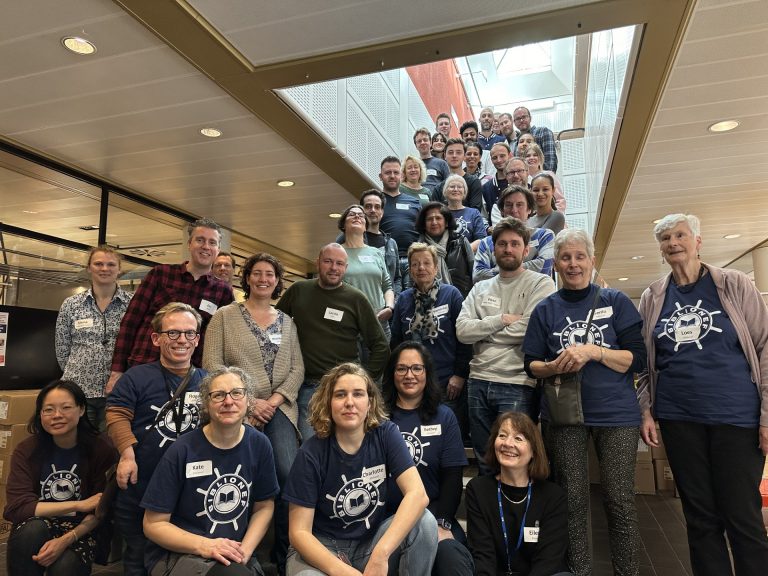Cat and Dog now speak even more languages
Cat and Dog originated years ago on a blackboard in Ghana. In booklets, games and atlases, these brainchildren of René and Elke Leisink helped increase children’s English and, later, Dutch vocabulary. But Cat and Dog can do more. Together with Rijnbrink, an institution supporting libraries in Gelderland and Overijssel, Biblionef is publishing five bilingual editions: Dutch-Arabic/Ukrainian/Tigrinya/Dari and Farsi.

Karien van Buuren and Anita van Lierop work as senior consultants at Rijnbrink. ‘We already knew Biblionef director Bethzy Gianella Chiang, because Biblionef once had a nice book collection that we could distribute to families where little (Dutch) was spoken or there were few books in the house,’ Karien van Buuren says. ‘The children from those families were able to daydream with those books, get away from their worries for a while and just have fun with books, together with their parents. That was a success. When our cooperation with asylum seekers’ centres and other reception organisations came up, the idea for the bilingual Cat and Dog books was born.’
Proficient in the home language
Anita van Lierop: ‘Again, we wanted to do something with a collection that would appeal to newcomers. It is often difficult to get books in smaller or non-western languages in the library collection because we cannot order them, so we wanted to have books printed in different languages.’ It is especially important for children in AZCs to be proficient in their home language, Karien explains. ‘That helps them to learn Dutch as well. But above all, that home language is part of their identity, and necessary for contact with their families. So it is incredibly important to learn and keep up with that home language too.’
Universally recognisable
The Cat and Dog books are ideal to help children become more fluent, according to Anita and Karien: ‘Short sentences, lots of repetition, beautiful drawings, and with those talking animal characters that are not specific to a Western context. There are many emotions and objects in it that are universally recognisable.’ Biblionef went looking for translators, and Rijnbrink did a needs assessment among libraries. These also serve linking classes, have pop-up branches in reception locations and also come to people’s homes with the VoorleesExpress. Anita: ‘We showed some titles of the English-language version as examples to the libraries to give them an idea of what to expect from the series. They responded positively, almost all branches ordered one or more sets of 65 booklets: 13 Cat and Dog titles in five languages.’
Sample copies
The production took some doing – not all languages have a script commonly used by Dutch printing presses – but the booklets will be delivered in January. Karien: ‘We are going to follow up: how are the libraries using the booklets, how are they appreciated? I am actually confident that they will be of value.’



